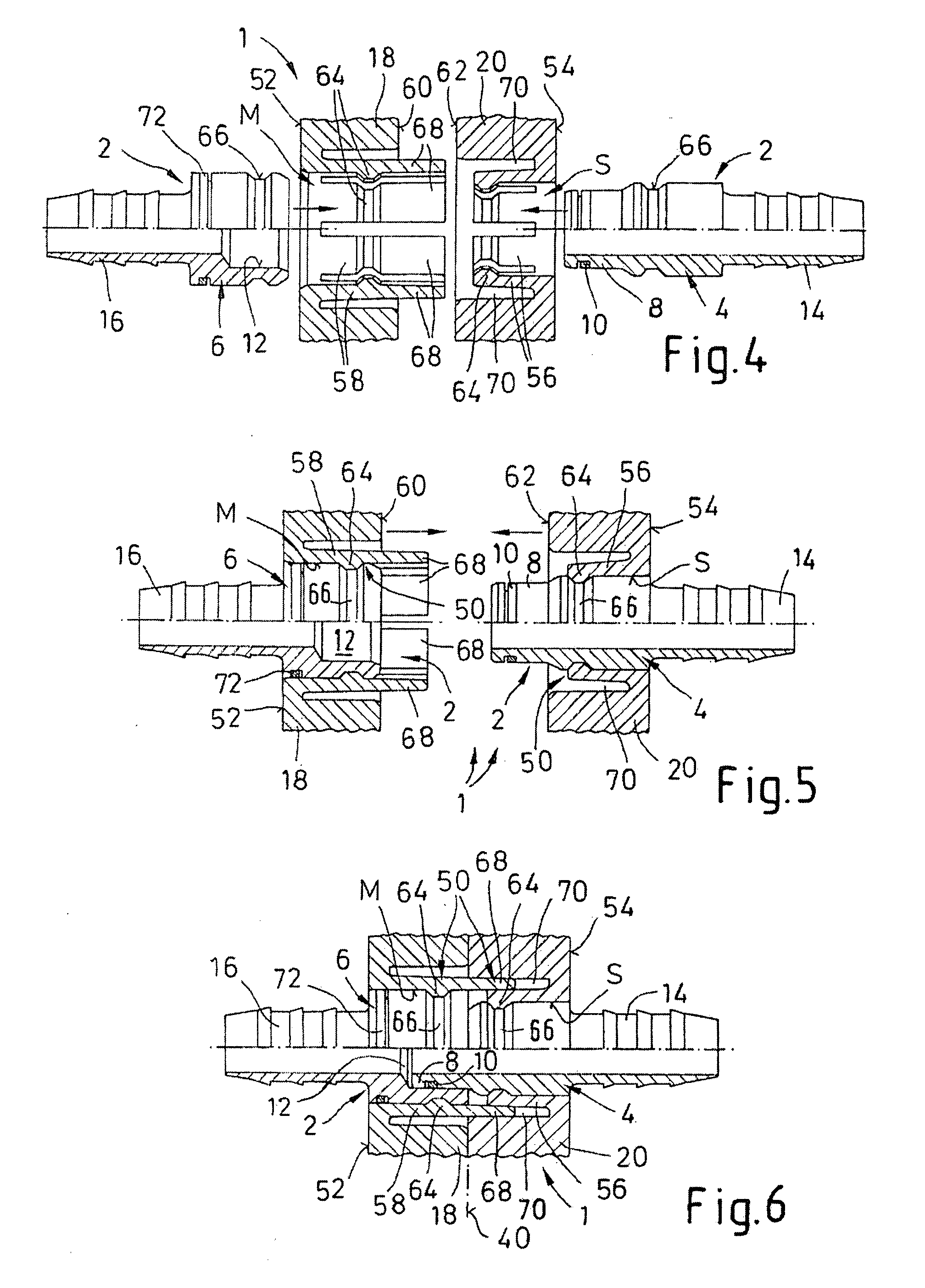Coupling Device for Media Conduits
- Summary
- Abstract
- Description
- Claims
- Application Information
AI Technical Summary
Benefits of technology
Problems solved by technology
Method used
Image
Examples
Embodiment Construction
[0023] In order that the present invention may be more readily understood, embodiments thereof will now be described, with reference to the accompanying drawings. The following description is merely exemplary in nature and is in no way intended to limit the invention or its application or uses.
[0024] In the various figures of the drawing, identical parts are provided with the same reference numbers. Each description of a part, which is possibly only undertaken once with reference to one of the figures of the drawing, applies analogously with respect to the other figures of the drawing in which that part can likewise be seen with the corresponding reference number.
[0025] A coupling device 1 according to the invention is provided for an even number of at least two, and in the illustrated embodiment six, plug-in couplings 2. The coupling device comprises two plug-in coupling parts, a plug part 4 and a socket part 6. As best seen in FIGS. 4-6, each plug part 4 has a plug stem 8 which ...
PUM
 Login to View More
Login to View More Abstract
Description
Claims
Application Information
 Login to View More
Login to View More - R&D
- Intellectual Property
- Life Sciences
- Materials
- Tech Scout
- Unparalleled Data Quality
- Higher Quality Content
- 60% Fewer Hallucinations
Browse by: Latest US Patents, China's latest patents, Technical Efficacy Thesaurus, Application Domain, Technology Topic, Popular Technical Reports.
© 2025 PatSnap. All rights reserved.Legal|Privacy policy|Modern Slavery Act Transparency Statement|Sitemap|About US| Contact US: help@patsnap.com



